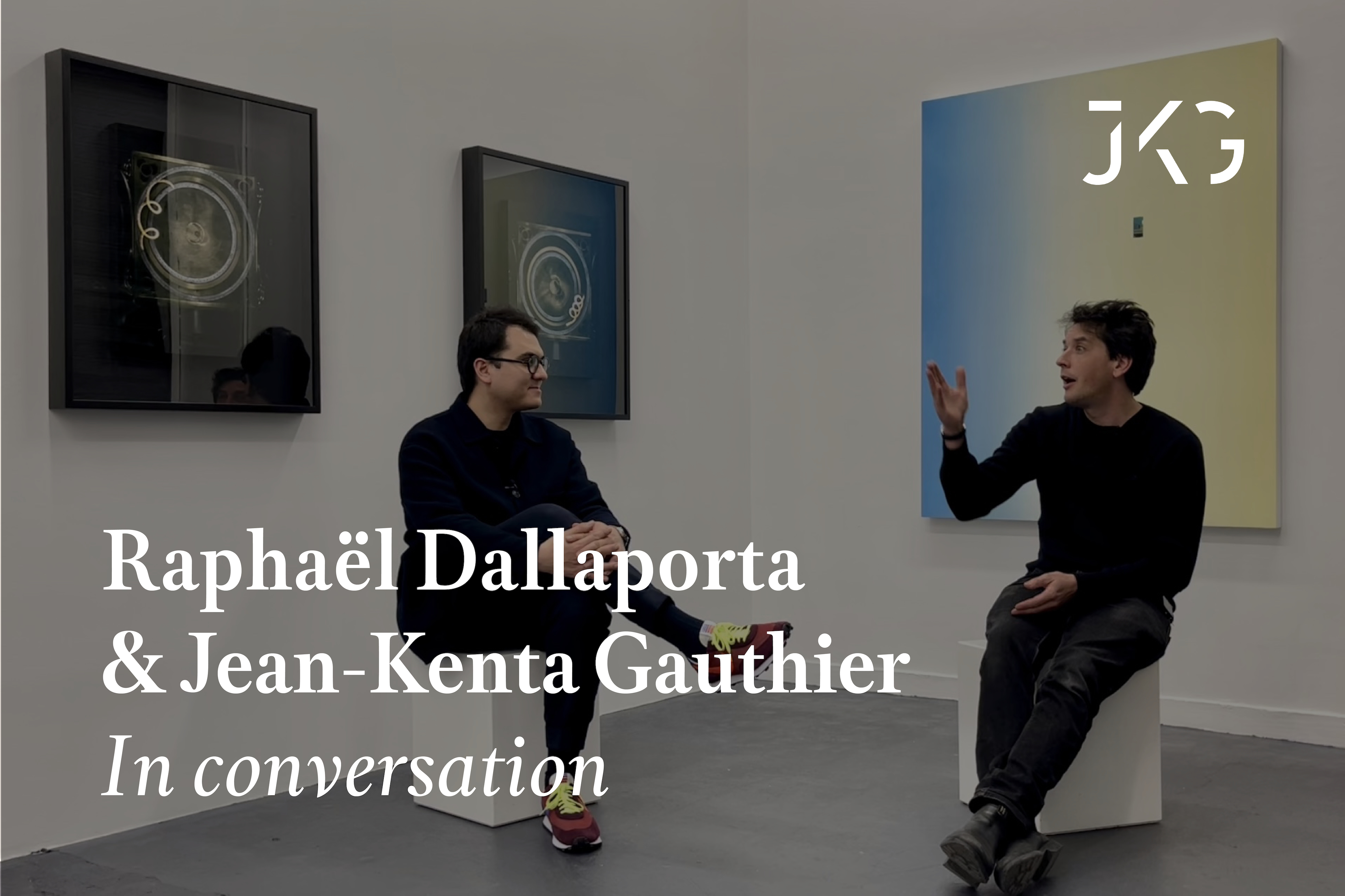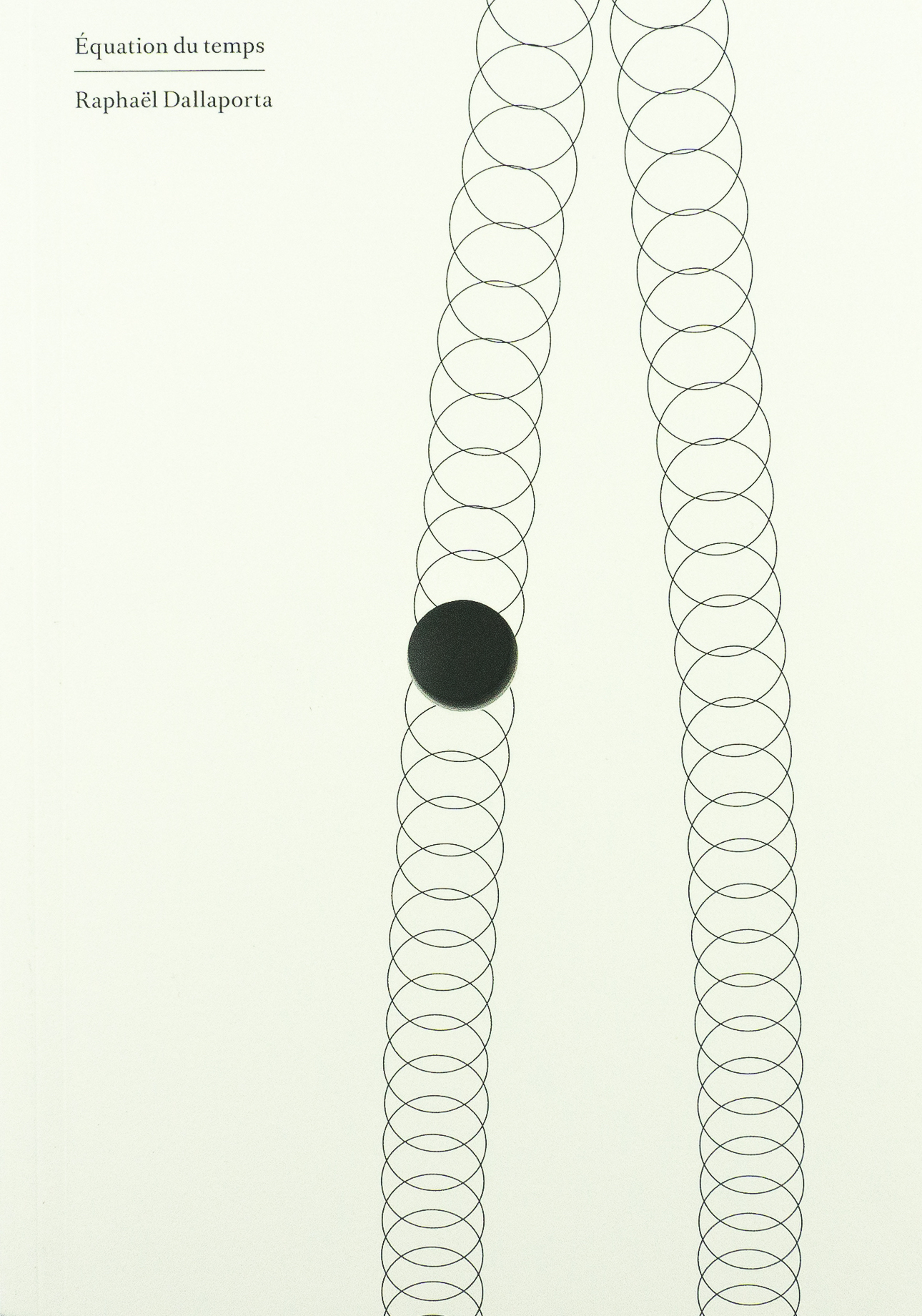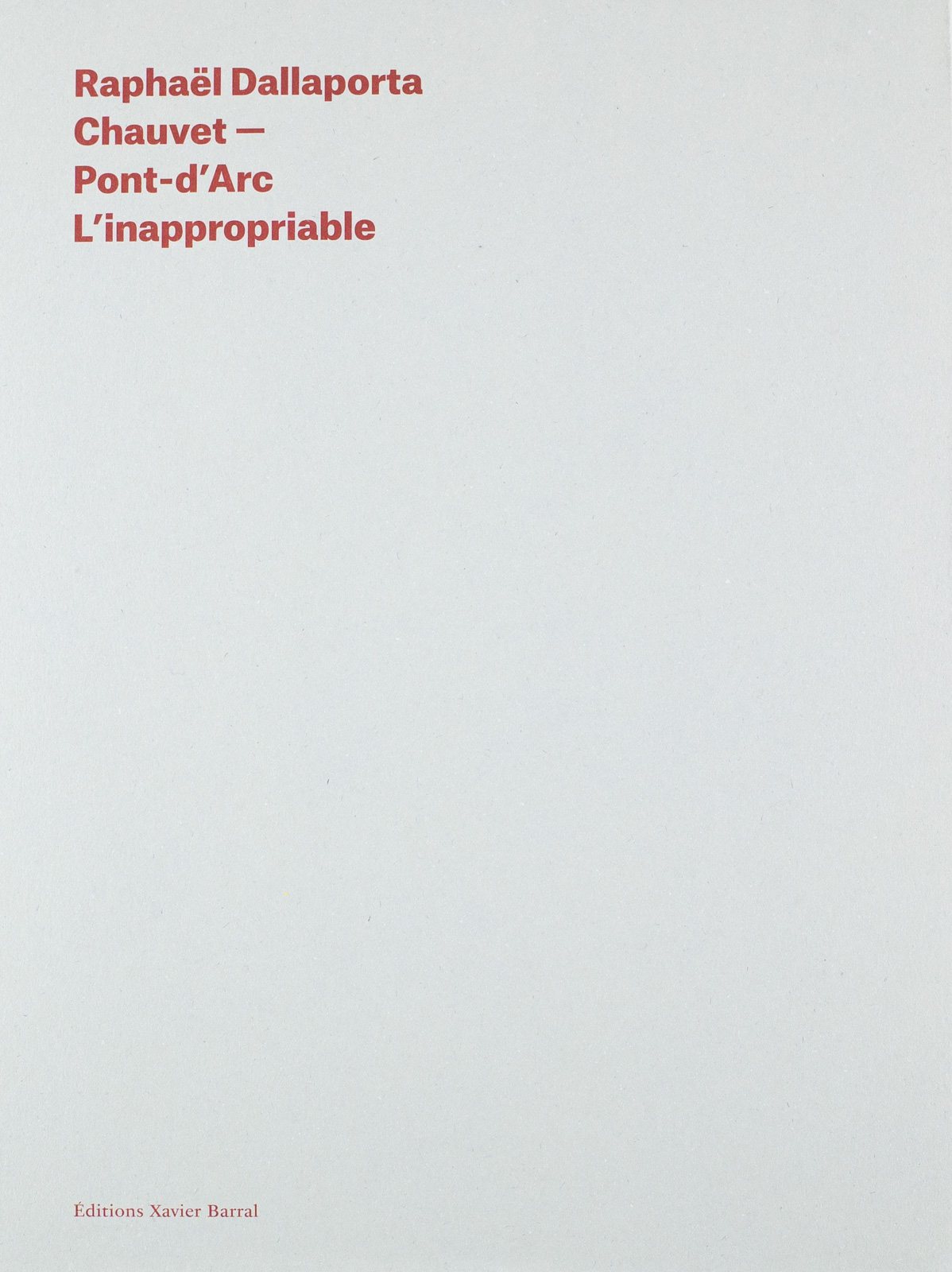Gallery news

& Jean-Kenta Gauthier in conversation
" [...] the world, no longer as a journey having constantly to be remade, not as a race without end, a challenge having constantly to be met, [...] but as the rediscovery of [...] a geography of which we had forgotten that we ourselves are the authors."
(Georges Perec, in Species of Spaces, 1974)
Through various techniques and protocols, RaphaŽl Dallaporta questions the links between progress and our evolution, the movements of the world and the place we occupy in it. The exhibition RaphaŽl Dallaporta, Paraboles, presented at the Jean-Kenta Gauthier / Vaugirard gallery from 5 February to 26 March 2022, presents a series of new photographic and pictural works through which the artist sketches parables of the world's evolution and the trajectories of progress.
The seven works in the series Astrarium (2020) are a metaphor for the non-linear nature of progress. Each photograph is the result of setting in motion a dial of the Astrarium, the oldest clock known in history, made in the Middle Ages by Giovanni Dondi and which disappeared during the Renaissance. This instrument achieved the feat of calculating the positions at any time of the year of the seven major stars and planets known to science at that time by materialising the geocentric system. In the mid-1980s, the Musťe International d'Horlogerie (MIH, La Chaux-de-Fonds, Switzerland) succeeded in reproducing the clock thanks to Dondi's original manuscript preserved for six centuries in Padua. By creating moving images of this clock, which was considered a wonder of the world at the time, RaphaŽl Dallaporta has created a new representation.
Collaborating with Masaki Kanazawa, conservator at the MIH, the artist photographed the movement of each of the Astrarium's dials using a light source and long exposure times. The light thus forms loops that return to their course while unfolding; the planets seem to move backwards in order to move forwards, a phenomenon known as retrogradation which, for the artist, constitutes a metaphor for the non-linear course of progress, following the example of what the philosopher and historian Ernest Renan wrote in L'Avenir de la science [The Future of Science] (1890): ?True progress sometimes seems to be a retreat and then a return. The retrogrades of humanity are like those of the planets. Seen from the earth, they are retrogrades; but absolutely they are not. The retrogradation occurs only to the eyes that see only a limited portion of the curve.?
Astrarium is articulated in the exhibition with Parcours [Course] (2022), a large pastel gradient that evolves from blue to pale yellow and refers to the scientific model showing the evolution of the temperature of the universe. This theory is based on the assumption that the universe should have appeared blue on average at its birth, with the warming trend of galaxies subsequently shifting to warmer colours. The current colour, which is similar to a pale yellow, has been officially named 'cosmic latte' by astronomers at John Hopkins University. RaphaŽl Dallaporta's vast gradient, referring to this theory of the average colour of the universe, thus constitutes a chronological frieze, as total in its ambition as it is approximate in its manual execution, which embraces the entire universe over 20 billion years.
In Parcours [Course], the present and the entire period of mankind, which in all logic would not exceed the thickness of a hair, are embodied by the photograph of Concorde on fire during its take-off on 25 July 2000, a few seconds before its tragic crash near Charles de Gaulle airport. This event marked the end of the race for supersonic civil flight. From his first steps, mankind had managed to move at Mach 2 until this accident, since when two decades have passed without further acceleration. This unique event, which can be dated to the nearest second, could be the point of return of a retrogradation loop in the history of speed.
Astrarium and Parcours [Course] evoke, according to variable temporal scales, the non-linear course of progress in our history. These works by RaphaŽl Dallaporta are a lesson; they refer to our own trajectories and constitute contemporary paraboles.
(Jean-Kenta Gauthier, January 2022)
†
Full available on our YouTube channel.


